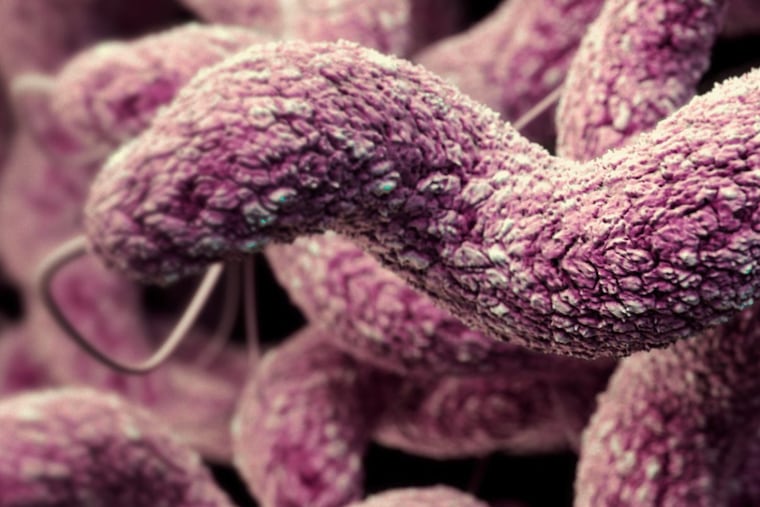The world keeps using more antibiotics and it's making us sick
Antibiotic use has tapered in the United States, but increased use of the drugs elsewhere has experts worried it may spur the evolution of drug-resistant "superbugs."

Patients with a fever or congested lungs increasingly are being discouraged from taking antibiotics in the United States, and that's a good thing. Those symptoms often are caused by viruses, in which case antibiotics — which kill bacteria — are the wrong approach.
But a new study finds that although antibiotics use has declined somewhat in the U.S., the nation remains the leading user of the drugs worldwide, with 3.3 billion doses administered in 2015. As many as one-third of these doses are thought to have been inappropriate, leading to the rise of "superbugs" — bacteria that develop resistance to the medicines.
And in many countries, antibiotics use is increasing, the study authors reported Monday in Proceedings of the National Academy of Sciences.
From 2000 to 2015, antibiotics use per person jumped by 39 percent in a sample of 76 countries, the researchers found. The total number of doses consumed climbed even more, by 65 percent.
Some of that growth likely was beneficial, as it represented increased access to treatment in lower-income countries whose fortunes were improving, said lead author Eili Y. Klein, a fellow at the Center for Disease Dynamics, Economics and Policy, a nonprofit research institute in Washington.
But too often, antibiotics are deployed against infections that would be better addressed with preventive measures such as sanitation, said Klein, also an assistant professor of emergency medicine and epidemiology at Johns Hopkins University.
"As lower- and middle-income countries increase their economic growth and start to use antibiotics more, we don't want them to fall into the same trap that higher-income countries have," he said. "While we need to reduce consumption globally, we need to do it in a safe and effective manner that still allows low-income countries access to antibiotics."
>> Read more: Why taking unneeded antibiotics might make you fat, and other facts to know
The U.S. total of 3.3 billion doses for 2015 was relatively unchanged from 3.4 billion doses in 2000. But the population rose during that period, so the picture looked better on a per-person basis, Klein said. Study authors calculated a rate of 28.2 doses per 1,000 U.S. residents every day in 2015, down 14 percent from 32.9 doses per 1,000 residents in 2000.
In the process, the U.S. fell from the top five countries in per-capita antibiotic use:
In 2000, the five highest consumption rates occurred in high-income countries: France, New Zealand, Spain, Hong Kong, and the U.S., the authors found, using sales data from the global research firm IQVIA.
In 2015, three of the five highest rates occurred in low- or middle-income countries: Turkey (first), Tunisia (second), and Algeria (fifth). Higher-income countries Spain and Greece were third and fourth on the list.
The results from the U.S., Japan, and some other developed nations were promising, said Jason C. Gallagher, a clinical professor and infectious diseases specialist at Temple University's School of Pharmacy.
"But you had much of the rest of the world catching up, and that is discouraging," said Gallagher, who was not involved in the research. That's a concern because in a global economy, a drug-resistant pathogen can spread easily from one country to the next.
Antibiotics promote resistance in this way: Though they may be effective against a specific organism that is causing disease, they kill other microbes in the process. That means clear sailing for any remaining bacteria that were resistant to the drug, enabling them to multiply.
And contrary to popular perception, that problem can arise even when antibiotics are used appropriately, Temple's Gallagher said.
"Any use leads to resistance," he said. "If you're using amoxicillin to treat someone's strep infection, the bacteria in your gut do not care. It can still lead to a resistant infection elsewhere in the body."
Not included in the study is another cause for concern: the overuse of antibiotics in livestock. In the U.S., the drugs are given to farm animals in far greater numbers than to human patients.
While the drugs are needed to treat sick animals, some farmers have traditionally used them as a preventive measure or even just to promote growth. Public health experts warn that such overuse may lead to the development of drug-resistant bacteria, which in turn can spread from farm animals to humans.